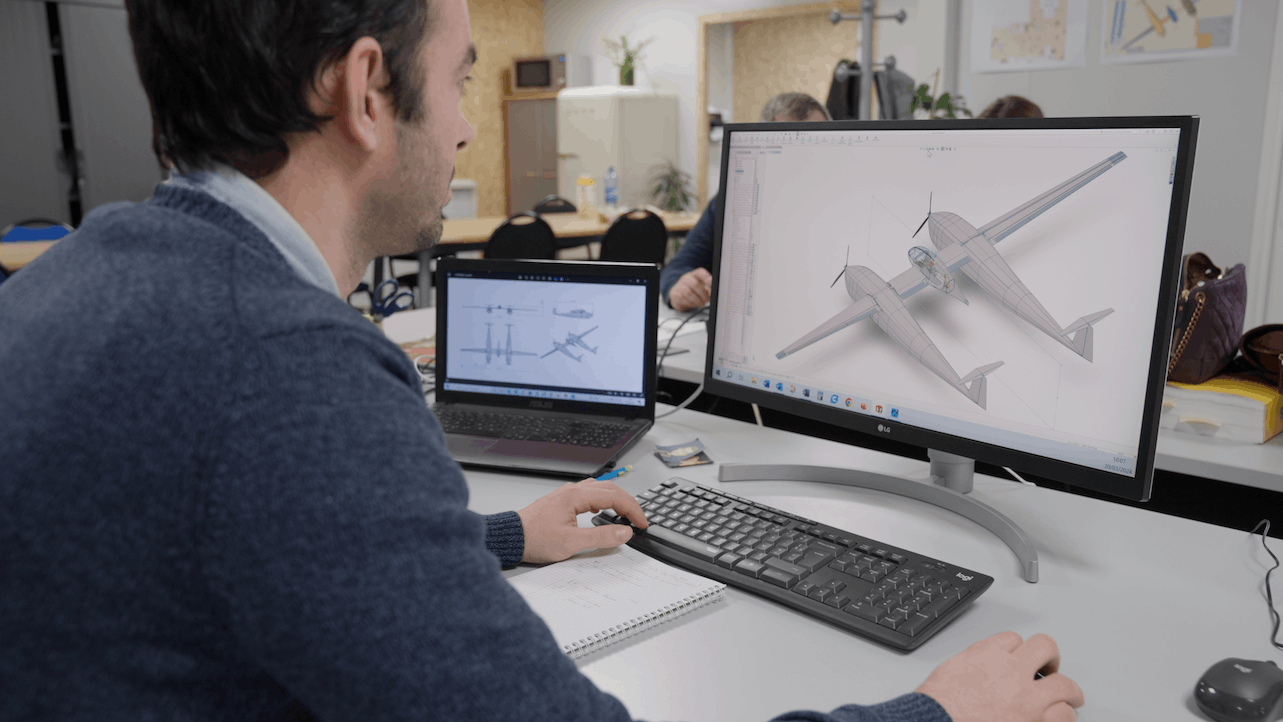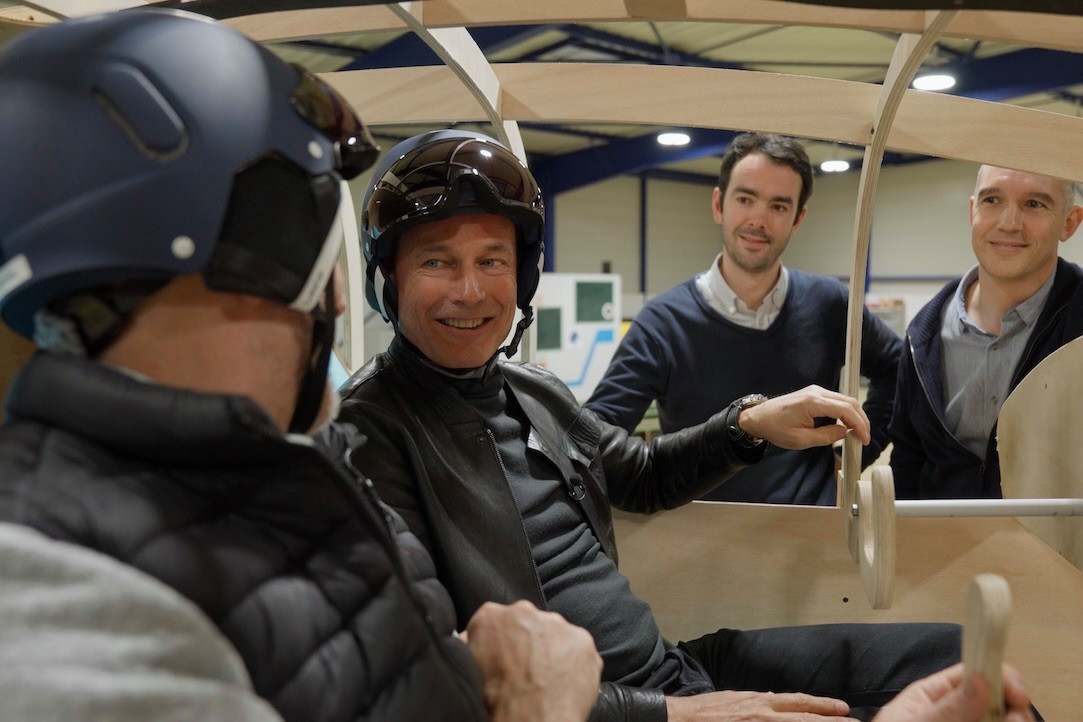“More than a technological feat, Climate Impulse is an invitation to rethink progress, to imagine a more respectful future and to inspire collective commitment. It demonstrates that sustainable progress is not only possible--it is already happening.” In a few sentences, the Swiss explorer, environmentalist and psychiatrist Bertrand Piccard reminds us what drives him: to show that enough green technologies are available on the market to accelerate the change that climate scientists are calling for with increasing urgency.
On Thursday 8 May, the adventurer showed off the features of his new plane, symbolically inviting people to embark on the adventure... even though, technically, the two seats in the cockpit measuring seven cubic metres will already be occupied by the pilot and co-pilot, Raphaël Dinelli. Dinelli was the winner of the Jacques Vabre in 1997, took third place in the Route du Rhum in 1998 and has completed four circumnavigations of the globe (placing 10th in the 2008 edition of Vendée Globe). He’s also an aircraft pilot, trained as a test pilot for experimental aircraft and research director at the Laboratoire Océan Vital.

Climate Impulse will have a wingspan of 34 metres and fly at an altitude of 3,000 metres. Photo: Climate Impulse
“The major technological challenge,” said this sailor-air pilot at the launch, in 2024, of the Climate Impulse project, “is to build an aircraft around two tanks of liquid hydrogen maintained at -253°C, powering electric motors via fuel cells.” The aircraft presented this Thursday includes two tanks of 11 cubic metres each of green hydrogen, stored at the right temperature, an innovative storage system that allows the aircraft to carry 5.5 tonnes of hydrogen and cargo, delivering enough energy with its two electric motors of 270 horsepower each to fly around the world--at an altitude of 3,000 metres. The voyage, planned for 2028, is expected to take nine days.
“With Climate Impulse, we want to demonstrate that it is possible to decarbonise aviation using green hydrogen. We will increase the energy performance of the powertrain by removing the technological barriers that limit the efficiency of propellers, fuel cells and electric motors, and by reducing the weight of the tanks,” Dinelli said in February at a technical briefing. “We are proud to be working with our main technology partner Syensqo and technology advisors such as Airbus, ArianeGroup, Safran, Duc Hélices, EKPO, GreenGT, SDMS, Ad-Venta and H2 Pulse.”
The first tests should be carried out next year. Assembly of the aircraft will take place at Châteauroux airport, bringing together all the key components, including the cockpit, wings, hydrogen tanks and propulsion system.
There are many technical challenges ahead before this type of aircraft can be envisaged for widespread use in civil aviation. Airbus has announced three concepts for this type of aircraft by 2030, which also clearly demonstrates the avant-garde dimension of Piccard’s project. There will be questions of aircraft design, airport infrastructure and hydrogen production--amongst others.
This article was originally published in .
